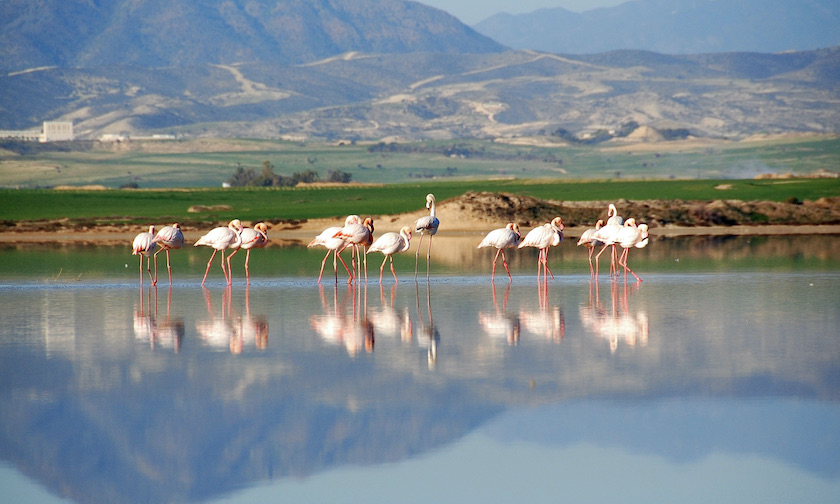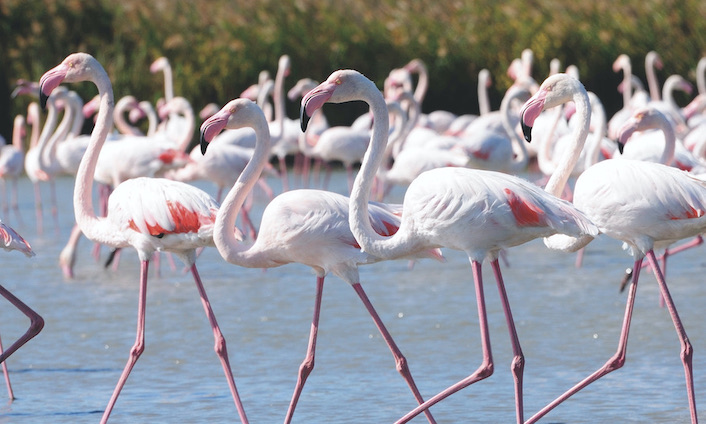Flamingos & Salt Lake


Most famous for the flocks of thousands of vivid Greater Flamingos that frequent the lake during the winter season, Larnaka Salt Lake is actually a complex of four salt lakes, covering a surface area of 2.2 sq km. The main lake with its winding nature path and bird watch tower is known as 'Aliki'. This larger lake is then followed by lakes Orphani, Soros and Airport, stretching all the way to Pervolia, Meneou and Dromolaxia villages.
Located near the old airport and the Hala Sultan Tekke mosque, the lake has huge ecological value and is considered to be one of the most important wetlands of Cyprus. As such, it has been declared a Ramsar Wetlands of International Importance site, an EU Natura 2000 site, a Special Protected Area under the Barcelona Convention, and a Bird Life International Important Bird Area (IBA).
Larnaka's frequent feathered visitors
The dark red algae which grows in the Salt Lake is the basis of the food chain, as the small shrimp in the lake feed on it. In turn, this shrimp is food not only for the flamingos, but also other migratory birds, which total more than 85 species. The inflow of fresh water in the Salt Lake is necessary as it maintains the ecological balance of the wetland.
The flamingos stop off at the lake as part of their migratory route, arriving with the first rainy weather (typically in November), and stay at the lake until around March. When there are higher water levels, their numbers can reach tens of thousands, with their distinctive honking noise enjoyed by walkers along Aliki’s path. The honking is actually the flamingo’s way of communicating that they need to stay together, and they shy away from humans coming too close to their habitat.
Whilst we understand that visitors like to view and photograph these majestic birds, it is important to note that wading out into the salt lake to get closer to the flamingos is prohibited as this is highly damaging for the very sensitive birds.
More information can be found on the page of Bird Life Cyprus:
Basic facts about the Greater Flamingo

